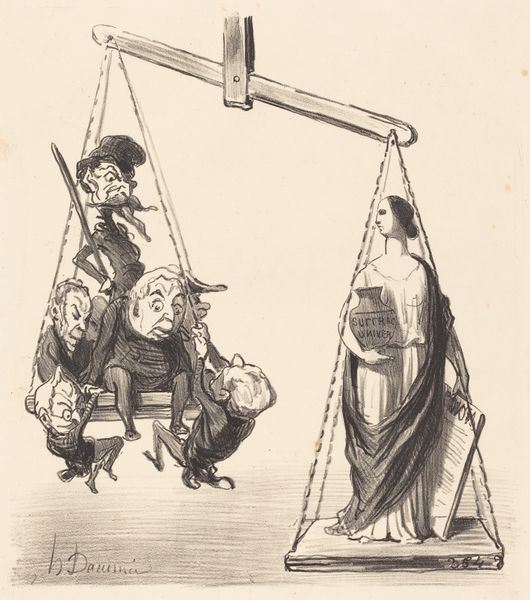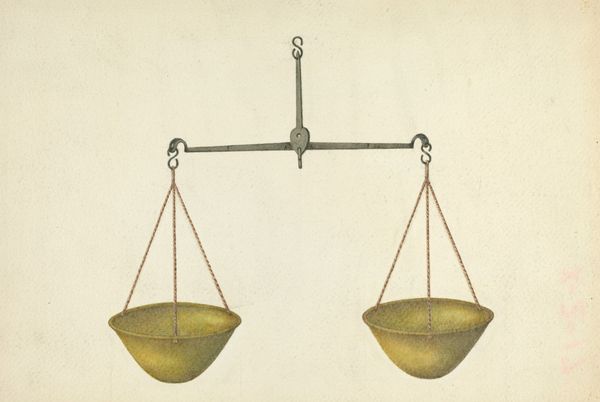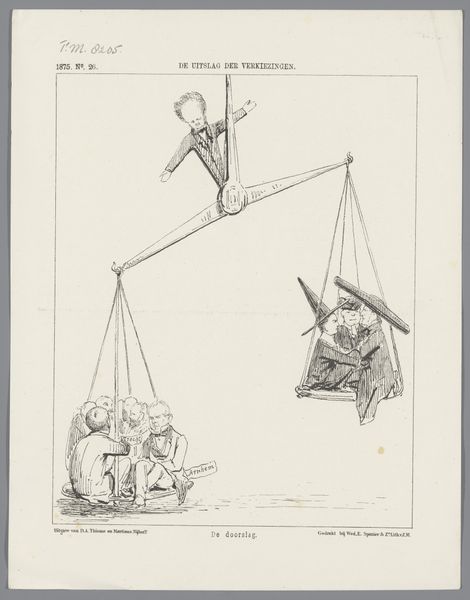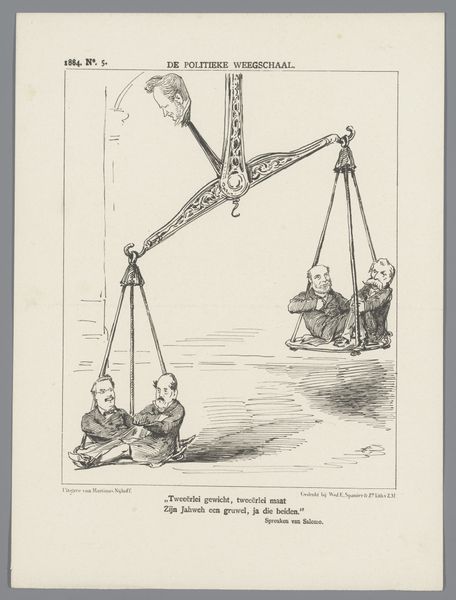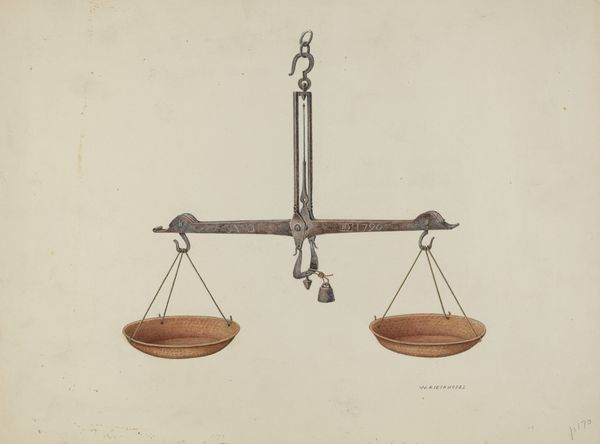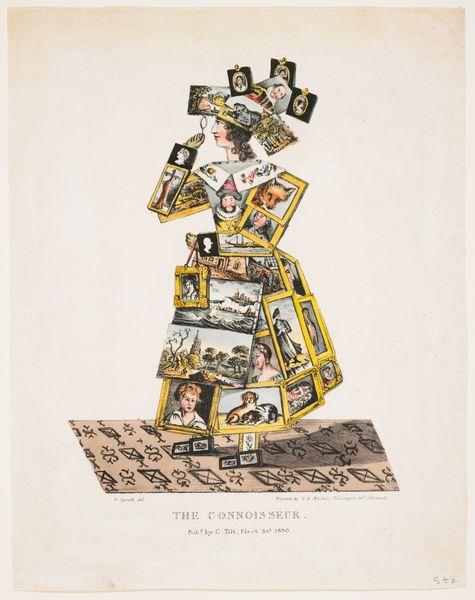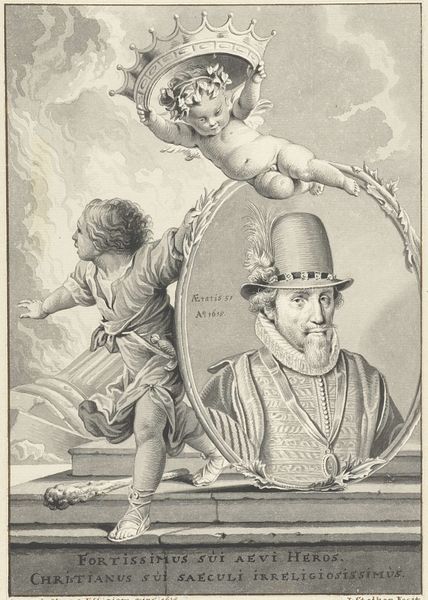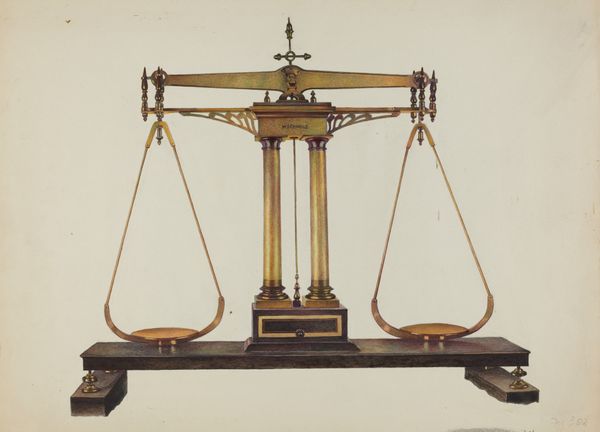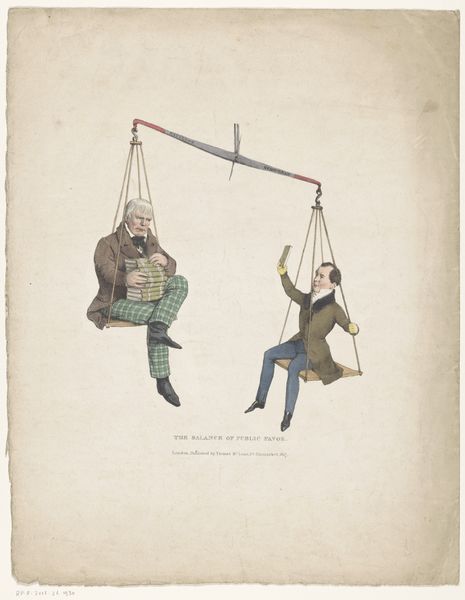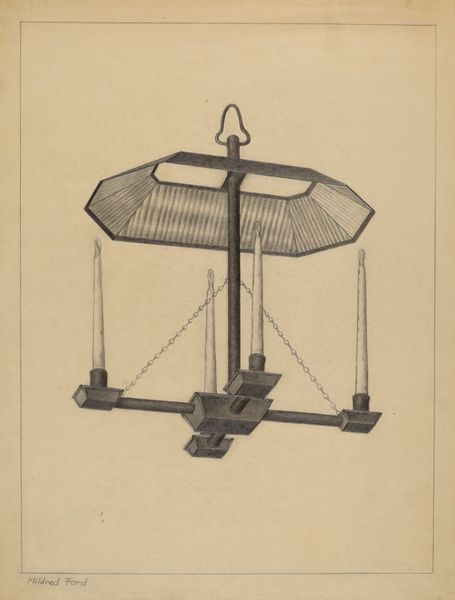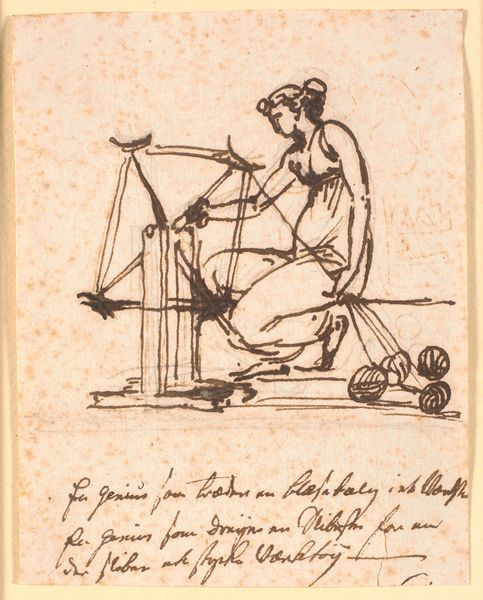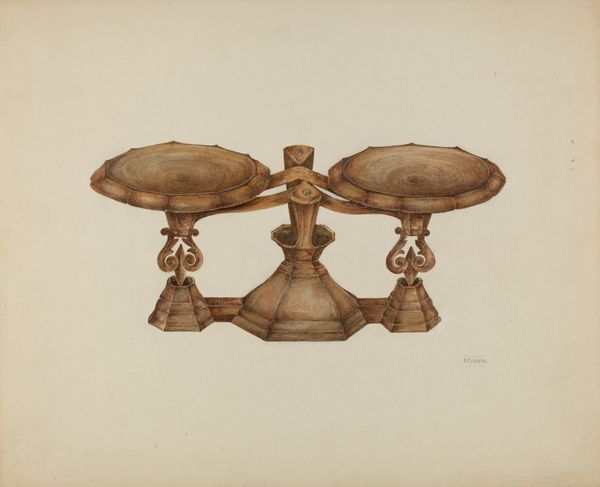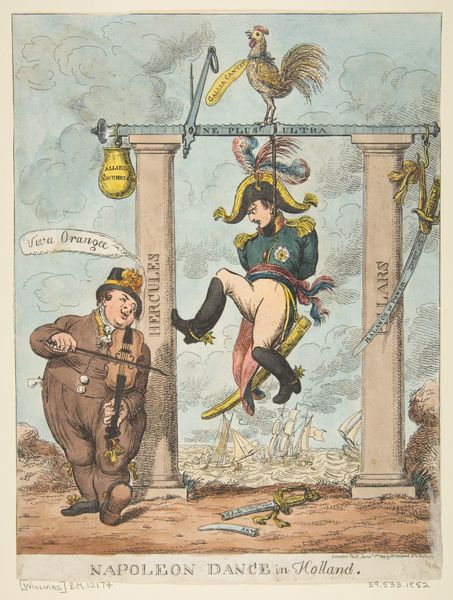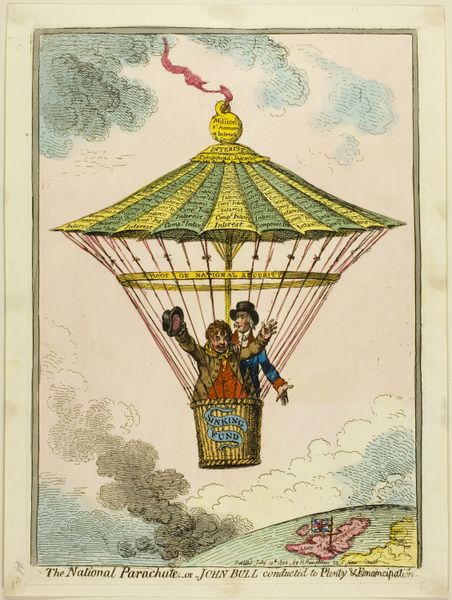
print, watercolor
#
portrait
#
allegory
# print
#
caricature
#
watercolor
#
romanticism
#
cityscape
#
watercolour illustration
#
history-painting
#
watercolor
Dimensions: height 229 mm, width 205 mm
Copyright: Rijks Museum: Open Domain
Curator: I see immediately that this is a watercolor print using allegory and caricature. I am curious. Editor: Let's delve into this piece, “Balans van Europa, 1814,” by Derk Anthony van de Wart. It looks to me like a political cartoon depicting the balance of power in Europe, doesn’t it? I mean the title speaks to it but I am sensing real tension. Curator: Precisely! Scales are potent symbols across cultures. I see one side weighted down by Napoleon, literally grounded, clutching documents suggesting treaties, perhaps. Meanwhile, on the other side, an allegorical figure of Europe stands balanced. What strikes me are the objects falling from the fulcrum point: flowers and coins—suggesting what, do you think? Editor: Maybe rewards to countries allied against France in the Napoleonic Wars and conversely money taken? And the scale itself is being manipulated by a disembodied hand… It points, I think, to interventionist forces. What I notice most is the scroll displaying a map of Europe. The power and importance of claiming or having "mapped" space seems key. Curator: The cartography is important here and, certainly, a reference to the shifting territorial claims during the post-Napoleonic restructuring of Europe. Notice the beam is inscribed with text: “Eendragt maakt magt onder de volkeren”, or Unity makes strength amongst the peoples. We see not just political entities but allusions to collective will. How very romanticist of van de Wart! I wonder if the people agreed. Editor: An interesting touchstone—yet who defines "unity"? Van de Wart positions a very top-down vision of it, enforced from on high and benefitting certain figures and states far more than others. It’s telling that Napoleon is forced into this unnatural position with document and sword aloft. Is there comment being offered by van de Wart? Curator: Possibly so. His choices hint at a perspective perhaps sympathetic to some powers and more dismissive of Napoleon's ambition. However, I feel the lasting power in his print stems from the way he visualized these dynamics—balancing both history-painting, cityscape and portrait conventions—all playing with a potent iconography which endures beyond any fleeting political moment. Editor: I agree the caricature form lets van de Wart hint at something enduring; he's addressing more than a singular event. In foregrounding the power dynamics behind peace, van de Wart leaves space for critical reflection on how "balance" gets created. Curator: Exactly! Thinking about how visual tools allow societies to remember and retell their own history can open eyes to continuity within change itself. Editor: Precisely. Analyzing depictions of power, like this piece, demands we remember to ask: who benefits and at whose expense?
Comments
No comments
Be the first to comment and join the conversation on the ultimate creative platform.
